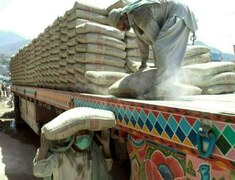Though not entirely unexpected, the fall of cement volumes in Jul-22, the first month of the fiscal year, is probably the shakiest place the industry has ever started a year. In the outgoing month, cement offtake dropped to 2 million tons, a first since 2010. The last time cement dispatches were below 2 mn tons, it was 2007 and Pakistan was facing a severe economic and financial crises. Talk about a bad omen.
This is a drop of 50 percent from the month of July last year where exports dropped 66 percent, now at 8 percent of total dispatches. Given how precarious the economic conditions are with many “experts” proclaiming doomsday scenarios where the country is heading into default like Sri Lanka and currency potentially falling close to Rs300 for a dollar, this doesn’t look good. However, it is probably for the best if overall consumption declines. The government has taken choice steps to cool down demand. There have been PSDP cuts that will bring a halt to big public sector projects being green-lit. Monetary policy tightening has already been underway to curb inflation, though inflation remains uncontrollable. But the borrowing costs for the private sector have ballooned as a consequence. Companies with debt-heavy balance sheets (DGKC, MLCF) will feel the burn in their pockets though SBP’s TERF financing providing concessional rates for these expansions will cushion a portion of the blow.

Certinaly, the decline in cement demand would mean tough times on companies specially at a time when most of them are undergoing expansions. But it also means reduction in import of expensive inputs such as coal and lower usage of pricey energy and power. The price of cement—along with other construction materials—is almost prohibitive and it is unlikely to contribute in the revival of demand even if part of July’s decline in dispatches could be blamed on the monsoon spell or Eid holidays. For context, over the past year, average cement prices have increased 71 percent (comparing spot prices for Jul-22 to Jul-21). Comparing the indexed price, both cement and steel price indices grew nearly 50 percent in Jun-22 compared to last year; higher than the growth in WPI of 39 percent.

With export markets drying up owing to high freight rates and poor economic conditions cross-border, and circumstances at home—inflation running amok, high cost of borrowing, crazy price hikes of inputs—not expected to improve a lot in months to come, it will be all about tightening belts and bracing for impact for cement manufacturers from here on out.























Comments
Comments are closed.